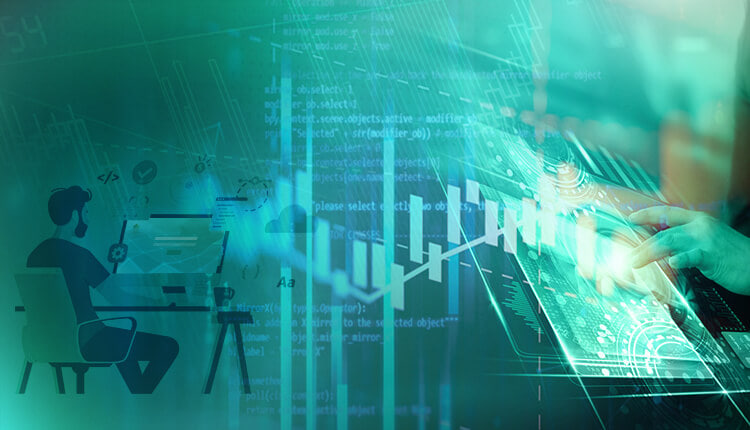Russia's Resilient Economy: Defying Expectations in 2023?
Meta Description: Deep dive into Russia's surprising economic performance in 2023. Analysis of GDP growth, industrial output, unemployment, and future outlook, including expert insights and FAQs. Keywords: Russia, GDP, economic growth, industrial production, unemployment, economic resilience, Putin, sanctions.
Hold on to your hats, folks! The narrative surrounding the Russian economy has been one of relentless sanctions, predictions of collapse, and a general air of gloom. Yet, President Putin recently announced a projected GDP growth of 3.9% for 2023. Whoa! This seemingly contradicts the widely held belief that the country would be economically crippled. Is this a mirage, a clever bit of spin, or is something genuinely remarkable happening in the Russian economic landscape? This isn't just another dry recitation of economic figures; this is a deep dive into the heart of Russia's economic resilience, an exploration of the surprising strength it's demonstrating in the face of immense pressure. We'll analyze the data, dissect the underlying factors, and examine the implications for both Russia and the global economy. Get ready to challenge your preconceived notions because the reality is far more nuanced – and perhaps more intriguing – than the headlines suggest. We'll unearth the hidden strengths, acknowledge the persistent challenges, and ultimately, paint a picture of a complex economic reality that's far from the simplistic narratives often portrayed in the media. Buckle up, because this is going to be a fascinating ride through the intricacies of the Russian economy in 2023 and beyond. We'll explore the nitty-gritty details, present compelling evidence, and even offer some educated guesses about what the future might hold. So, are you ready to unravel the mystery of Russia's surprising economic performance? Let's dive in!
Russia's GDP Growth: A Closer Look
President Putin's announcement of a projected 3.9% GDP growth for 2023 certainly raised eyebrows. This figure, while impressive under the circumstances, requires careful scrutiny. It’s crucial to understand that this isn't just about raw numbers; it's about the context. The growth is happening against the backdrop of unprecedented Western sanctions, aimed at crippling the Russian economy. This makes the resilience even more noteworthy. However, we should also acknowledge that the baseline for comparison is significantly impacted by the economic fallout from the initial shock of the sanctions. Growth from a depressed base can appear more significant than it actually is.
The reported 4.5% increase in industrial output during the first eight months of the year further supports this narrative of surprising resilience. The 8.1% growth in the processing industry and the near 20% jump in machinery manufacturing are particularly telling, indicating a potential shift towards import substitution and a focus on domestic production. This is a classic example of an economy adapting and innovating under pressure – a testament to the adaptability of the Russian industrial sector. However, the long-term sustainability of this growth needs further investigation.
Analyzing Key Economic Indicators
Let's break down some key indicators to get a clearer picture:
| Indicator | Value (Jan-Aug 2023) | Significance |
|----------------------|-----------------------|------------------------------------------------------------------------------------|
| Industrial Output | +4.5% | Demonstrates significant growth despite sanctions. |
| Processing Industry | +8.1% | Highlights strength in domestic production and import substitution. |
| Machinery Manufacturing| ~+20% | Suggests a focus on technological self-sufficiency and industrial development. |
| Unemployment Rate | 2.4% | Historically low, indicating a relatively healthy labor market. |
The consistently low unemployment rate is another fascinating aspect. This suggests that despite the sanctions, the Russian labor market has remained surprisingly robust. This could be attributed to several factors, including government support programs and the adaptability of the workforce. However, it’s important to remember that this statistic doesn't necessarily reflect the quality of employment or the overall well-being of the population. More granular data is needed to paint a complete picture.
Factors Contributing to Russia's Economic Resilience
Several factors contribute to Russia's surprising economic performance:
- Import Substitution: The sanctions have forced Russia to focus on domestic production, leading to a surge in certain sectors.
- Commodity Prices: Favorable global prices for energy and other commodities have provided a significant boost to the Russian economy.
- Government Support: Government initiatives and fiscal policies have played a role in stabilizing the economy.
- Geopolitical Shifts: The shifting global landscape, with increased reliance on alternative trading partners, has helped mitigate the impact of sanctions.
- Resilient Domestic Demand: Despite challenges, domestic consumer spending has remained relatively stable.
However, it's important to note that these factors aren't without their caveats. The reliance on commodity prices is inherently volatile, and import substitution, while beneficial in the short-term, might not be sustainable in the long run without significant technological advancements.
Challenges and Uncertainties
Despite the positive economic indicators, significant challenges remain:
- Sanctions' Lingering Impact: The long-term effect of sanctions on the Russian economy is still unclear and could hinder future growth.
- Technological Dependence: Russia's dependence on foreign technology in certain sectors remains a major vulnerability.
- Inflationary Pressures: While unemployment is low, inflationary pressures remain a concern, potentially impacting consumer spending.
- Capital Flight: The sanctions have led to significant capital flight, which could impact investment and long-term growth.
- Geopolitical Risks: The ongoing geopolitical instability adds to the uncertainty surrounding the Russian economy.
These challenges should not be underestimated. The rosy picture painted by the GDP growth forecast needs to be balanced with a realistic assessment of these persistent headwinds.
Frequently Asked Questions (FAQs)
Q1: Is Russia's economic growth sustainable?
A1: While the current growth is impressive, its long-term sustainability is debatable. It heavily relies on factors like commodity prices and the success of import substitution, both of which are subject to considerable uncertainty.
Q2: How effective have the sanctions been?
A2: The sanctions have undeniably had an impact, but their effectiveness in achieving their stated goals is a complex issue. While they have disrupted the Russian economy, they haven't led to the complete collapse predicted by some.
Q3: What role has the government played in the economic resilience?
A3: The Russian government has implemented various policies and programs aimed at mitigating the impact of sanctions and supporting domestic production. The effectiveness of these measures is a subject of ongoing debate.
Q4: What is the outlook for the Russian economy in the coming years?
A4: Predicting the future is always difficult, but the outlook for the Russian economy is uncertain. It will depend heavily on the evolution of the geopolitical situation, the success of import substitution strategies, and global commodity prices.
Q5: How does this compare to other global economies?
A5: Comparing Russia's performance to other global economies requires careful consideration of the unique context. While the 3.9% GDP growth is notable, it's crucial to account for the sanctions and the resulting economic shock.
Q6: What are the implications for the global economy?
A6: Russia's economic performance has significant implications for global energy markets and commodity prices. Its continued resilience or a potential downturn could have ripple effects across the globe.
Conclusion
Russia's economic performance in 2023 has defied many expectations. The reported GDP growth, coupled with positive trends in industrial production and low unemployment, paints a picture of surprising resilience. However, this picture is incomplete without acknowledging the significant challenges that remain. The long-term sustainability of this growth is dependent on many factors beyond the control of the Russian government. The narrative is far from over, and the coming years will be crucial in determining the true extent of Russia's economic strength and adaptability in the face of ongoing geopolitical uncertainty and the lasting impact of Western sanctions. The situation warrants continued close monitoring and deep analysis to fully grasp the complexities at play.



